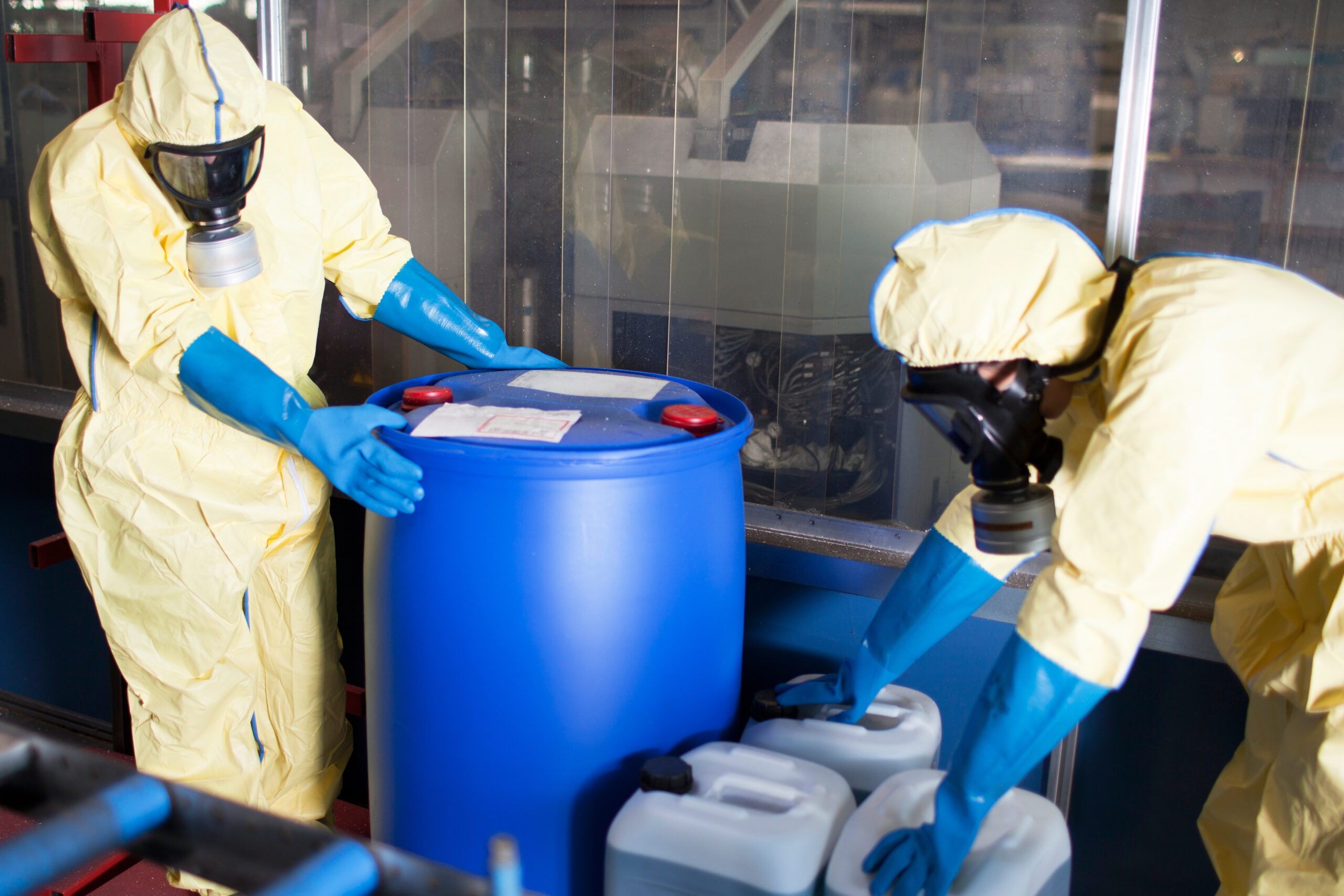Workplace Chemical Safety Tips
This article highlights the fundamental principles of Workplace Chemical Safety for EHS professionals new to this industry, as well as experienced pros who want to keep their skills fresh.
Every day, workers are exposed to thousands of potentially hazardous chemicals. This includes not only substances manufactured or used in production, but also cleaning supplies, paints, and solvents.
As a result, nearly 50,000 workers die and another 190,000 suffer illnesses related to chemical exposures each year, according to a University of California report. Some chemical exposures may result in immediate injuries such as burns or lung irritation. In other cases, it may take years for symptoms to appear, highlighting the critical importance of workplace chemical safety
Factors that contribute to incidents and injuries involving chemicals include improper storage and handling, poor ventilation, inadequate training and hazard communication, and long-term occupational exposure.
Fortunately, there are steps employers can take to prevent chemical injuries and illnesses. By making simple modifications to operating procedures and following a few basic safety tips, employers can protect workers from chemical hazards.
What are chemical hazards?
Chemical hazards refer to the potential of certain substances to cause physical or health hazards to people or the environment. The health hazards associated with chemicals and toxic substances can range from acute skin burns and irritation, to causing long-term health problems like cancer and lung damage. Physical hazards associated with chemicals include corrosion, fires, and explosions.
OSHA’s Hazard Communication Standard requires employers to make sure employees are aware of the risks and hazards associated with their work, including chemical hazards.
Understanding OSHA’s Standards for Workplace Safety
OSHA’s Hazard Communication Standard (HCS), or “HazCom”, ensures that workers are informed about chemical hazards and protective measures in the workplace. For this reason, it is also known as the “Right To Know” rule.
HazCom requires companies to evaluate potential hazards for any chemicals that are produced or imported, and then share information about these hazards with employees who may handle or come into contact with these chemicals.
10 tips for working safely with chemicals
1. Whenever possible, eliminate or substitute with safer chemicals.
The easiest way to avoid chemical hazards is to reduce or eliminate the use of hazardous chemicals. In many cases, there are safer alternatives available that can help avoid the potential for exposures and accidents, as well as lower disposal costs. Learn more by visiting OSHA’s Transitioning to Safer Chemicals toolkit.
2. Only keep the amounts of chemicals you need on hand.
Storing excess chemicals not only increases the risks of exposure, but can also increase costs associated with disposing of unused or expired materials. A good chemical inventory management system will help avoid excess ordering and related disposal costs.
3. Establish a plan for new chemicals.
Before a new chemical enters your facility, outline a plan for how it will be handled, stored, and disposed. This includes making sure you have the appropriate labels and safety data sheets for each chemical.
4. Track chemicals as they are received.
Recording chemicals as they come through the door is a simple but effective way to keep tabs on what’s stored in your facilities. This is especially important in the event of an emergency.
5. Ensure that all chemical containers are properly labeled.
As part of its HazCom standard revision, OSHA has adopted new labeling requirements for hazardous chemicals, effective July 19, 2024. These requirements are aligned with the seventh revision of the Globally Harmonized System of Classification and Labeling of Chemicals (GHS). Under GHS, labels must include specific elements that alert the user to potential hazards, as well as instructions on how to handle the chemical safely.
6. Follow proper chemical storage procedures.
Proper chemical storage procedures can help avoid spills and fires, prevent incompatible chemicals from being stored together, and avoid spoilage. Storage information can usually be found on the Material Safety Data Sheet (MSDS) or label.
7. Implement a system for maintaining and updating safety data sheets (SDSs).
Chemical suppliers periodically revise and update their safety data sheets as new hazard information is found or changes are made to the product. In turn, companies that use these chemicals need to make sure they have the most current version of each SDS on hand. Failure to maintain up-to-date SDSs for all chemicals on hand is one of the most commonly cited OSHA violations.
8. Regularly inspect all PPE.
This includes respirators, face shields, gloves, and goggles. Regular inspections help ensure that PPE is in good working order and will protect employees when they need it.
9. Ensure that employees have been properly trained.
OSHA’s HazCom standard requires employers to train workers on the chemical hazards they may encounter, how to use the information on SDSs, and proper job safety practices and protective measures. This is another frequent OSHA violation. A training management system can help you achieve better oversight on your training program.
10. Verify that first aid supplies, emergency showers and eyewash stations, fire extinguishers, and spill kits are readily available.
In addition, make sure that employees have been trained in their use.
Control exposure to chemical hazards in the workplace
Hazardous chemicals are an unfortunately common cause of occupational illnesses and injuries. By following these basic chemical workplace safety tips, you’ll be in a much better position to protect your employees from harm and your organization from an OSHA violation.
Download our Risk Assessment template now to avoid these risks:
